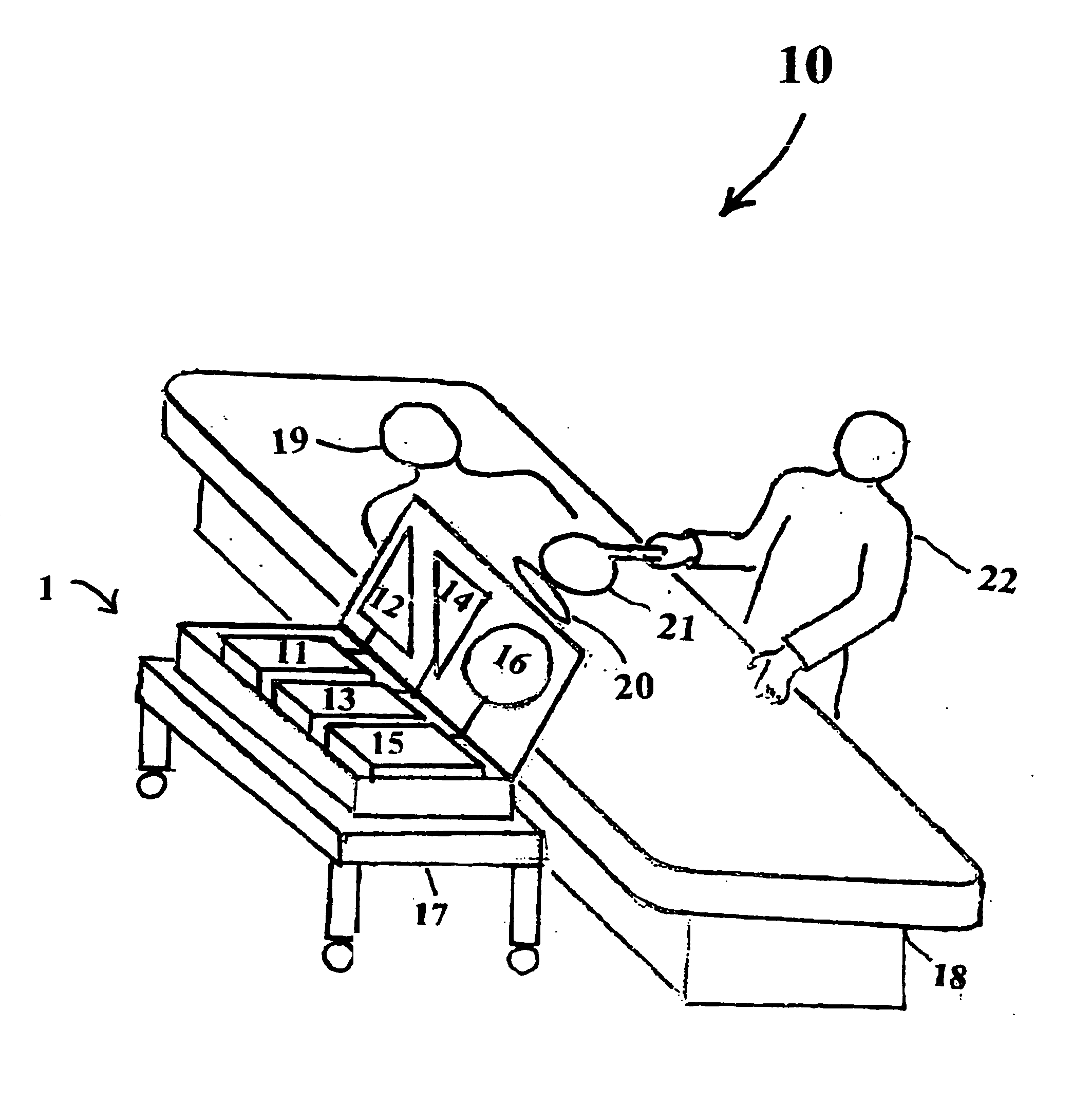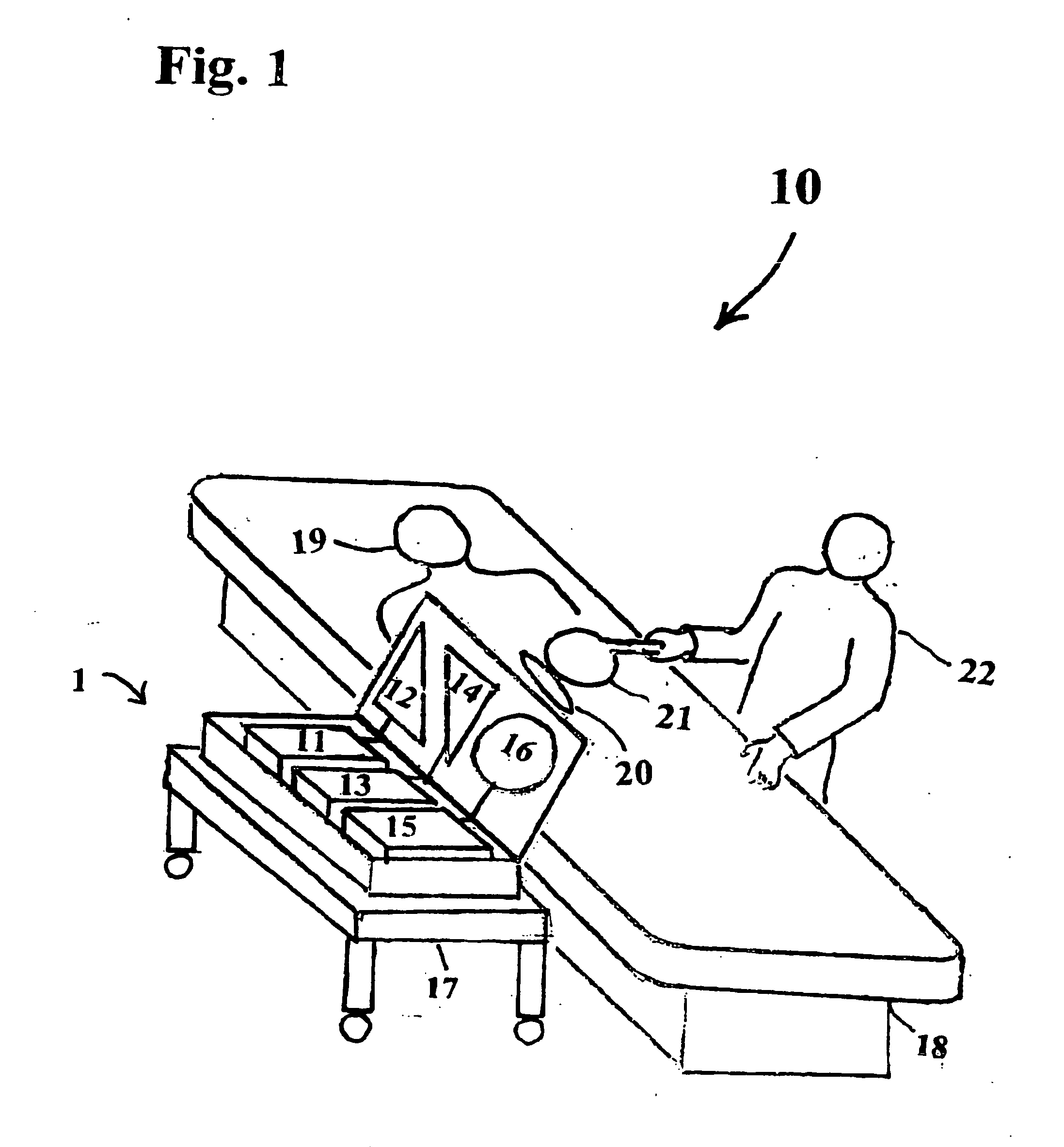The process is cumbersome and exposes the patient to unnecessary
radiation.
Detection of a retained dressing tends to be limited due to the small
diameter of the x-
ray opaque filament.
The size of threads is too small to be detected unless the probe is also inserted into the surgical cavity, which procedure would likely present issues involving
sterility and
tissue damage.
The system requires that the patient be transported to an X-
ray facility; it exposes the patient to unnecessary
radiation.
The article detection system and method disclosed by the Hinds patent does not detect metallic objects or non-metallic sponges inadvertently retained within a
surgical incision.
Consequently, most of the
signal is lost before any non-linear
transponder can be detected.
Additionally, the absorption of the
signal results in undesired heating of
body tissue.
In addition, the system disclosed by the '818 patent does not detect metallic objects and, as previously noted, use of
microwave frequencies can cause undesired heating of
body tissue.
Its size of approximately 2 inches makes it not optimal for attachment to smaller implements or gauze sponges and its ability to survive heat sterilization makes it suboptimal for use on metallic implements.
Furthermore, even when such a marker is secured to a metallic implement, metal in close proximity may cause
distortion of the
signal, so-called ‘shielding’, reducing the reliability (i.e., the range) of detection.
The
radiating element requires power to operate and, therefore, does not detect unpowered metallic objects or sponges even if they contain a passive tag.
Should such a tag exceed its battery life during an operation, the tag would become undetectable.
The system of the '596 patent does not detect sponges retained within a patient during an operation; it only counts surgical implements when they are disposed within the container.
This system disclosed by Johnson does not locate surgical instruments or sponges within a surgical cavity.
Metallic objects adjacent to the tag may distort phase information providing an unreliable indication.
This system does not detect untagged metallic surgical implements.
Such a system does not detect untagged metallic surgical implements.
Such a system does not detect accidentally included sponges or metallic objects in a
surgical incision.
The system does not detect untagged metallic objects left behind within a surgical incision.
This system does not detect metallic objects that do not have a marker attached.
Additionally, if a tag is attached to a metallic implement, the close proximity of metal may result in distortions of the signal, or “shielding” weakening the signal received, and possibly allowing it to escape detection.
This system does not detect metallic objects that do not have a marker attached.
Besides, as noted in the foregoing
paragraph, a metallic surgical implement may shield a marker, causing weakening of the preselected frequency signal.
Therefore, the process cannot actively detect whether a
sponge has been accidentally left behind in a
surgical wound nor does it provide a way of knowing that all the sponges have been removed, or whether any have been left behind in the patient wound.
This system does not provide means for identifying an individual
sponge or surgical pad.
It is not a passive device that can be incorporated in a sponge or surgical pad due to the requirement for a reliable power source.
Should such a tag exceed its battery life during operation, the tag would become undetectable.
Frequency of
information transfer to the reader is very slow due to the switching on and off action.
In addition, the smart marker is not encapsulated and is subject to damage by blood and other
saline fluids.
Further, if applied to metallic implements, the smart marker may be subject to “shielding” and weakening of the signal, as described above, possibly making detection of tagged metallic implements unreliable.
In view of the limitations inherent in each detection system noted above, there presently exists no single modality capable of reliably detecting all of the implements used in modern
surgery.
 Login to View More
Login to View More  Login to View More
Login to View More 


